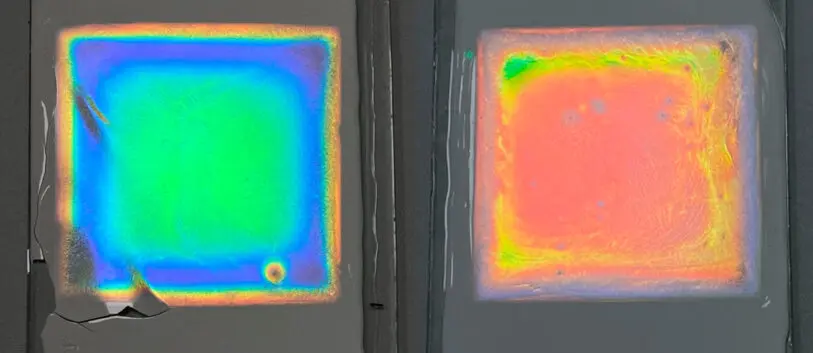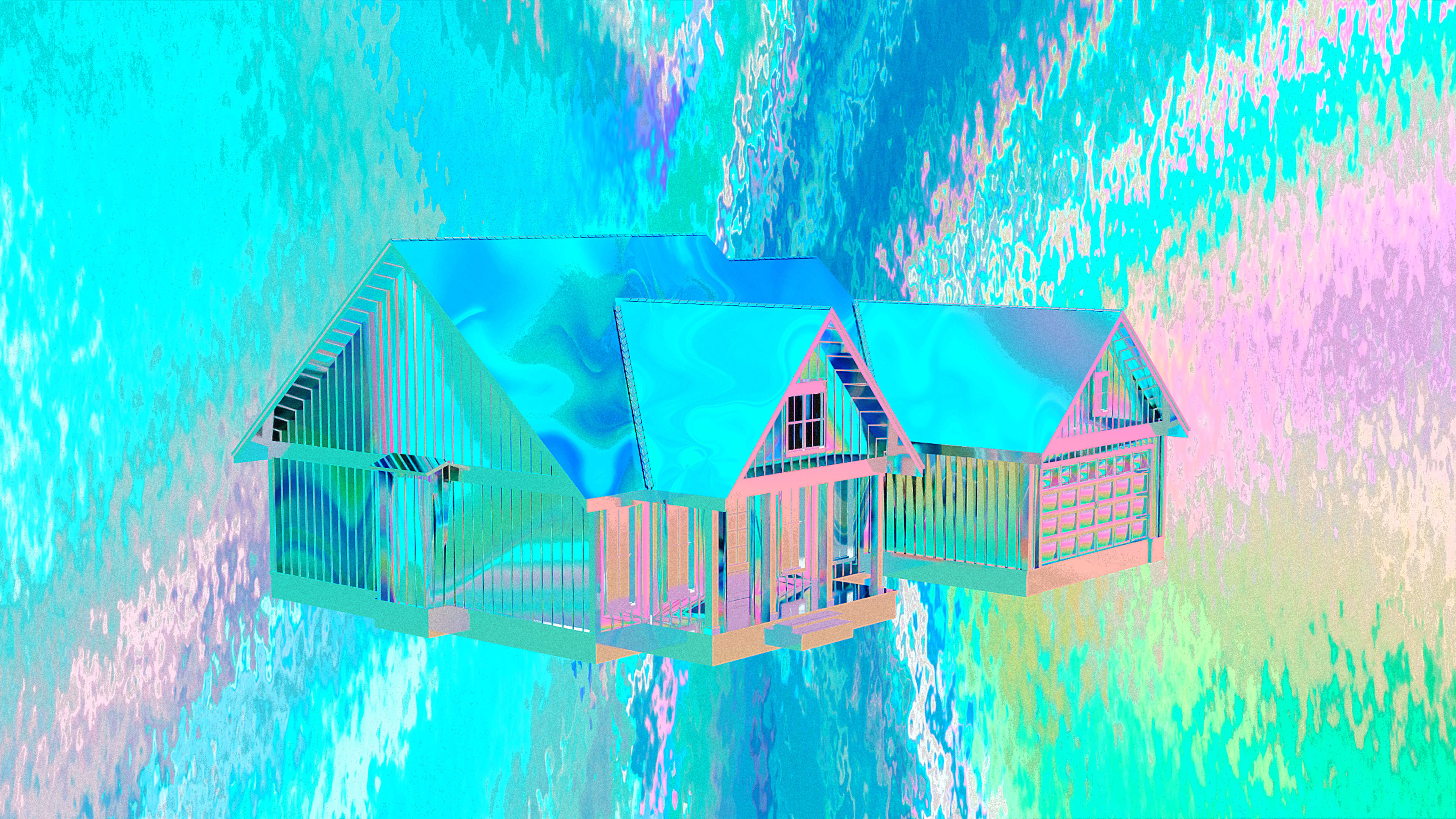As the world gets hotter, the energy used by air conditioners keeps surging. Over the next three decades, the number of devices sucking electricity from the grid is expected to more than triple. But new coatings can help buildings cool down passively.

First there was the whitest white paint, capable of sending heat from your roof into space. Now, researchers at the University of Cambridge have developed an iridescent, plant-based film that can do the same thing in color.

“The usual way to generate a color is dye, but dye will absorb light and heat up, and that counteracts the cooling effect,” says Qingchen Shen, a postdoctoral researcher at Cambridge working on the material who presented the research at a recent meeting of the American Chemical Society. Since colors normally make surfaces hotter, most coatings designed for cooling are white. Instead of using dye, the team turned to structural color, the same phenomenon that makes soap bubbles or beetle shells appear iridescent. Light hits tiny structures on the surface and bounces around, reflecting different wavelengths from different angles to create shimmering colors.

The researchers used nano-sized materials made from cellulose to create this iridescent effect, and then combined them with another layer of cellulose in white in a flexible film. A square meter of the film can generate over 120 watts of cooling power, as much as some air conditioners. In a study, the material was 7.2 degrees Fahrenheit cooler (or 4 degrees Celsius) than the surrounding air during the day. At night, it was nearly 20 degrees Fahrenheit cooler. Making walls or a roof cooler also helps cool down the space inside a building or car.
The films can be made in different colors and textures, and could eventually be used to coat cars or paint the walls of a house to help save energy. (While it may not fully replace air-conditioning in every home, it could meaningfully lower power bills.) The end product should be affordable. “We wanted to make it cheap,” says Shen. “That’s why we used cellulose-based materials. Cellulose nanocrystals can be extracted from wood or cotton. Cellulose is the most abundant polymer in nature.”
Recognize your brand’s excellence by applying to this year’s Brands That Matter Awards before the early-rate deadline, May 3.
